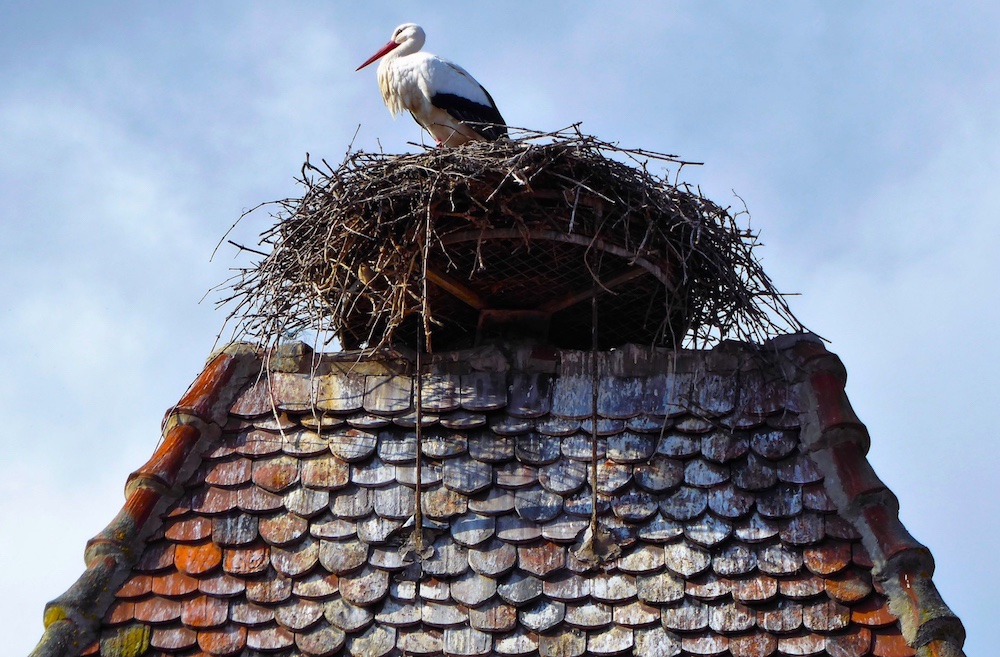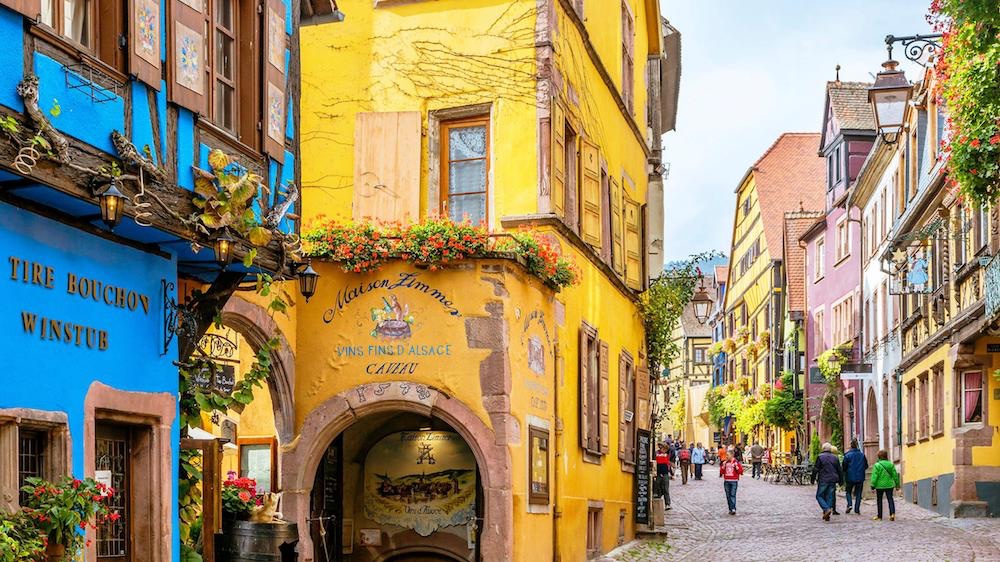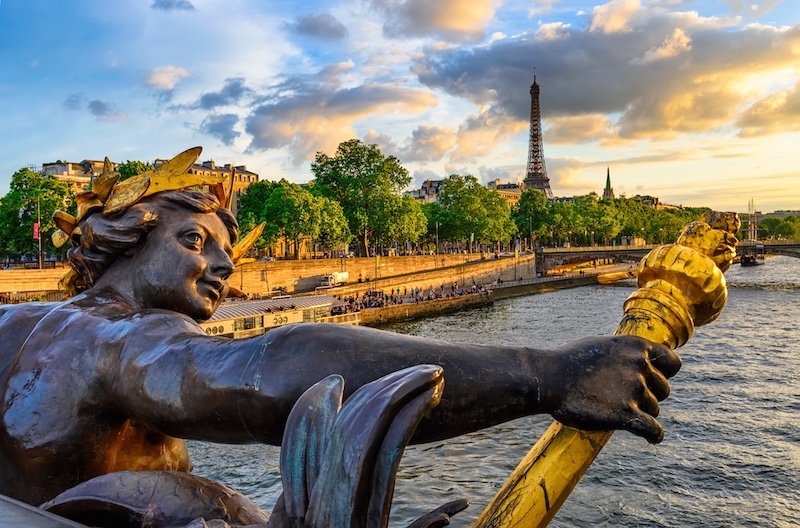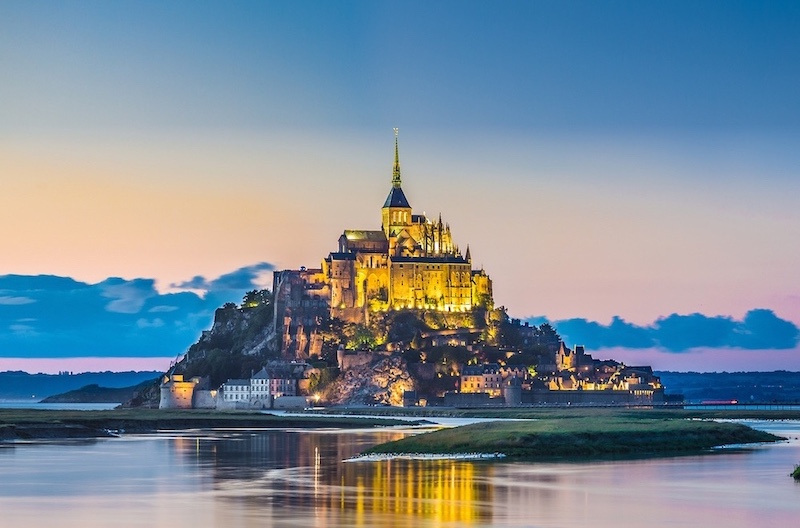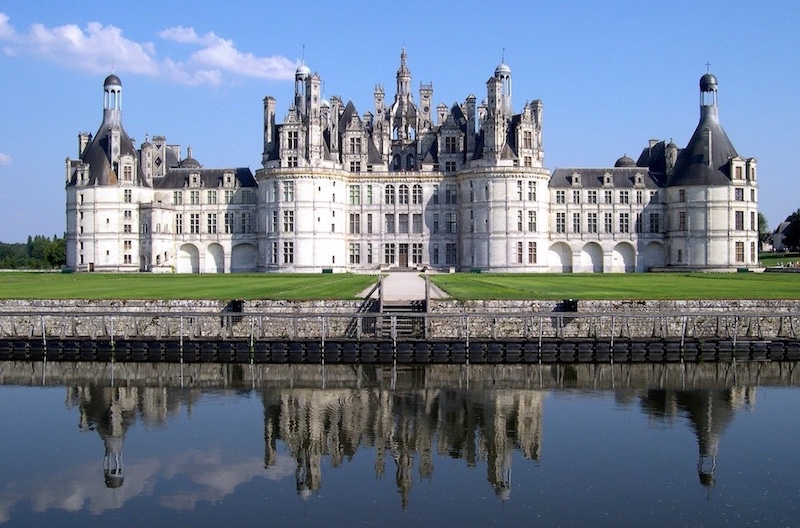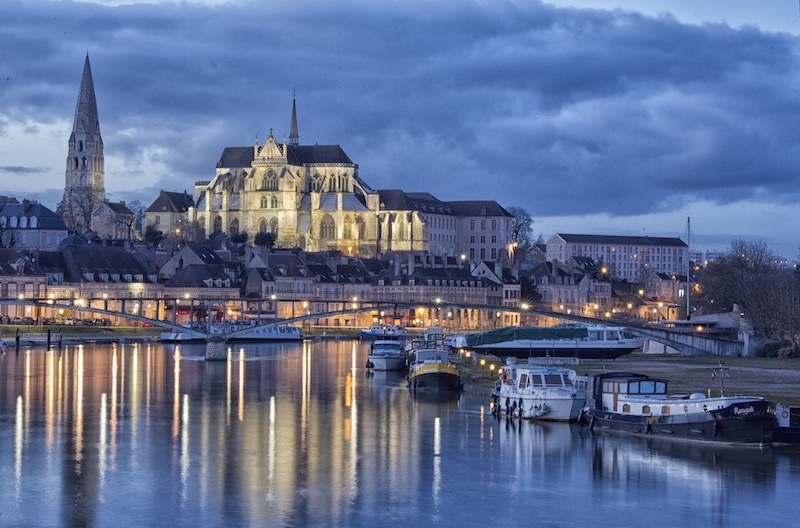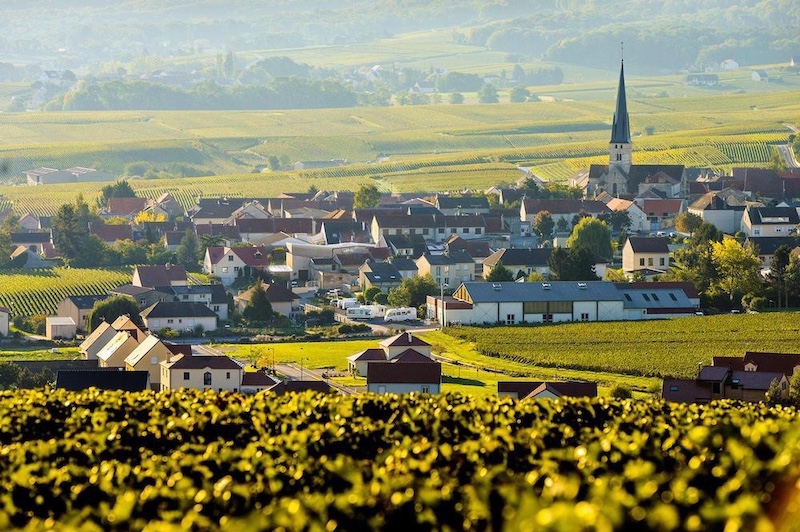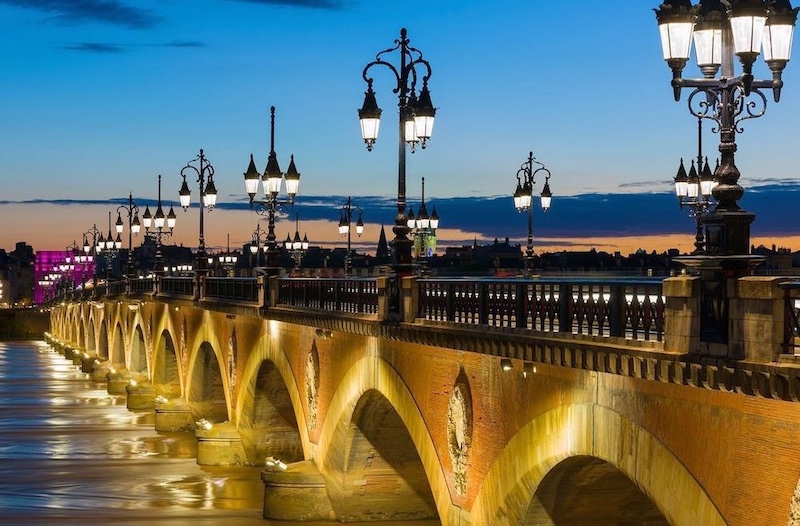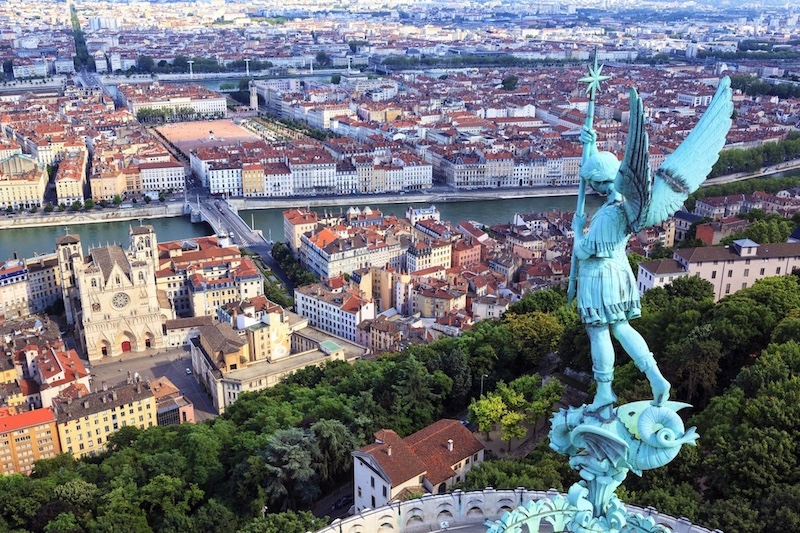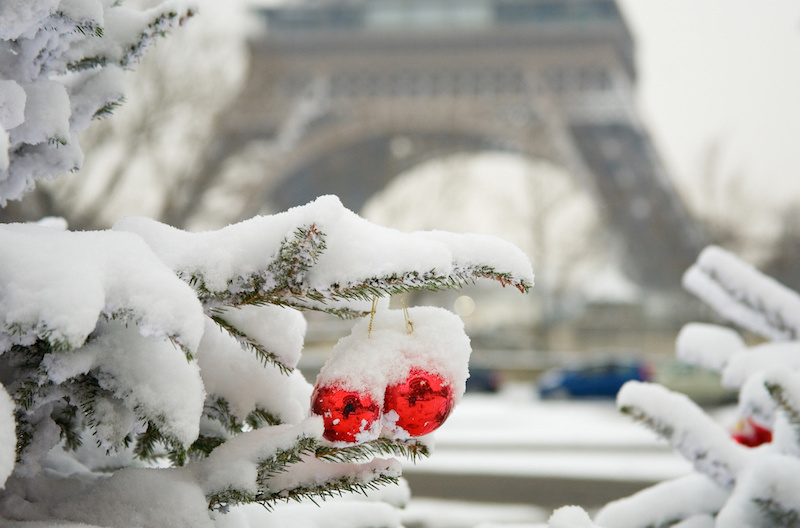Champagne & Alsace
With France’s restructuring of its regions, Champagne and Alsace now comprise the Grand Est in eastern France. Together they offer a vast array of culinary delights and delicious wines.
Alsace is a heavily influenced by its neighbor, Germany and changed back and forth many times as part of both countries. The German influence can bee seen in the charming storybook villages and its bustling capital, Strasbourg. Located between the Vosages Mountains and the Rhine River Alsace has beautiful, traditional Christmas markets that make a visit during holiday season a special treat. Strasbourg’s enormous Christmas market is one of Europe’s oldest. Driving along the Alsatian wine road you’ll find many small medieval villages and rolling hillsides with grapes that produce the area’s crisp white wines. In addition to the beauty of Alsace you’ll also find traces of both WW I and II as the region struggled between Germany and France, changing allegiances on two occasions and splitting families as it went. In Alsace you’ll discover half-timbered houses, peasant fare and folkloric costumes that are more closely related to the Black Forest than anything of the Ile-de-France.
Champagne is a different animal althogether! This is a sparkling region, elegant seat of the coronation of kings in Reims’ Cathedral, land of golden vineyards and wine towns like Epernay, Ay and Hautvilliers. Traveling the Routes du Champagne can satisfy not only the novice taster but also that of the most experienced champagne connoisseur. Stop for a tasting at a famous champagne house, learn how champagne grapes are grown and bottled to create its magical effervescence. If time is short you’ll find many Champagne cellars and renowned houses within Reims which can be visited. This prosperous city is the only location where you’ll find the crayeres, or chalk quarries, spectacular caves created by the Romans.
Champagne
Here the soil is not rich as Champagne sits on a vast cake of pure chalk; break off a piece and you can write with it! The stress of the chalk fields gives champagne its dry, austere quality. The Romans mined the chalk for building purposes and a thousand years later after carving out caves and grottoes with tunnels reaching miles back into the countryside, they had created the perfect climate with cool, constant temperatures perfect for storage. But it took a blind monk, Dom Perignon, working as a cellar master in the 17th century at the Benedictine abbey in Hautvilliers to give the world champagne. He had the idea of blending grape musts from various vineyards and letting the wine ferment in corked bottles thick enough to resist the pressure created by the genesis of the delicate nectar. The result was champagne, more than just a wine its fame soon spread beyond its birthplace to grace the tables of the world’s elite.
Centuries have passed, but the legend lives on. Thanks to its eloquent liquid ambassador, the name of the Champagne region is known around the world. The visitor who roams the rocky slopes of the Côte des Blancs or the Montagne de Reims in the summer, when the sun infuses the grapes with sweetness on meticulously pruned vine stocks, enjoys the experience of contemplating a genuinely exceptional terroir. Alternating smoothly between flat plains and low rolling hills, the land was in fact well known even before the invention of its emblematic tipple. Starting in the 10th century, the Counts of Champagne made their domain the most important commercial hub in Europe.
Champagne Cuisine
Dining in Champagne often involves tucking into meat and fish that are delicious and filling, dishes such as Agneau à la Champenoise, a stuffed shoulder of lamb accompanied by tomatoes or pig’s trotters a la Sainte-Menehould served with a strong mustard and beer. Other favorites include game dishes like wild boar, pheasant, and guinea fowl, while meals prepared with ham, salami and barbecued andouillete from Troyes provide a taste of traditional Champagne flavors. Equally delicious are the fish and seafood dishes available throughout the region, from crayfish and trout to oysters and caviar, there is something to appeal to all palates.
And it wouldn’t be France without a wide selection of local cheeses and Champagne produces such delights as Langres, dating from the 18th century with a long ripening process. Its strong aroma and a salty taste make it the perfect accompaniment to a bubbling glass of Champagne. Fragrant Brie and its cousin, Coulommiers, two of the noblest and most popular French cheeses are synonymous with Champagne. Soft Chaource cheese also has a great heritage and has been made in its namesake town since the 14th century. Produced in miniature wheels like a brie it has a creamy taste, an elegant choice to compliment a sparkling wine.
Champagne Wine
It’s no secret that Champagne is a very special wine. Surprisingly, how these wines are made is still a mystery to many. At its core, Champagne is an incredibly well made wine that takes dedication and patience to produce. It is a wine that is intimately tied to the “terroir” of the region, and each house’s unique philosophy on production.
Champagne is made as a blend of three main grape varietals: Chardonnay, Pinot Noir, & Meunier. The process has its roots in blending, in which still wines of each varietal are made from different parcels of land and then blended together, creating the signature cuvee for each producer.
In some cases, the winemaker may be working with as many as 400 different base wines! Once the blend is decided upon, the wine is inoculated with yeast for a second time, and sealed. As the fermentation occurs for the second time in the bottle, the bi-product — carbon dioxide — is trapped in the sealed environment. This creates the bubbles that make Champagne so famous.
The wines age with the yeasts in the bottle for a minimum of 15 months, but most producers choose to age their wines for much longer periods. This length of aging helps to create the toasty aromatic signature of Champagne.
Each producer has their own signature blend. For example, Veuve Clicquot Yellow Label is a signature blend for that producer. However, the same producer may also make a multitude of other “cuvees”, including single-vintage or single-parcel Champagnes. Tasting Champagne is a unique experience in that both the land as well as the winemaker hold so much influence over the final product in the glass.
Alsace
Alsace runs west to east from the pine-clad Vosges mountains through some of the most beautiful vineyards in France to the mighty Rhine river and the border with Germany. Changing hands several times over the centuries between France and Germany has only strengthened the independent character of this fiercely traditional region, where a unique dialect is still the most popular spoken language. Picturesque country inns with steep gables and wrought iron signs await travelers while gifted cooks are ready to greet them with the secrets of Alsatian cuisine. Strasbourg, Alsace’s magnificent capital needs at least a couple of days to properly explore.
The wine villages are a concentration of storybook towns from Colmar to Ribeauville. Steeped red roofed villages each devoted to the grape and bearing the names of their production - Kaysersberg, Riqueihr, Ammerschwir - entice visitors with their quaintness. Storks, which have become a good luck symbol of the area, still come from North Africa in mid-March to build their enormous nests on the chimney tops or a church roof.
Alsatian Wine
The foothills of the Vosges mountains are carpeted for miles with vineyards. They differ from those found throughout France as they are trained on very tall stakes with tendrils shooting off in all directions. Growing season is longer here due in no small part to a micro-climate. The wines of Alsace are typical of the German wines but often paler and dryer with a flinty finish. They are almost always whites with an occasional rose; reds are less important here. These grapes are filled with sugar and aromatics and when made into dry Riesling or Gewürztraminer wines, they retain lovely fragrance, pale apple-green color, delicious spice and moderate alcohol levels. Served in long stemmed glasses with a flat bowl, these wines do not require a long aging period.
The wines usually are classified by their varietal grape vine combined with the village. In 1983, regulators created the Alsace Grand Cru appellation, meant to signal particularly fine production of local wines. To date some 50 vineyard sites around the region have been designated Alsace Grand Cru.
On occasion some Alsace winemakers allow the grapes to continue to ripen to make a late harvest dessert wine. The sweet Alsatian wines are made in a style similar to a Sauterne using dried grapes. The region’s sparkling wine, a Cremant d’Alsace, is made from Pinot Blanc, Pinot Gris, Riesling and other varietals. It’s a good choice with fine bubbles, acidity and light body reminiscent of a champagne.
Alsatian Cuisine
Alsace is eating and drinking country! Portions are huge and hearty taking inspiration from its German heritage. With the French reputation for distinctive culinary flair, being able to savor cuisine inspired by outside influences is somewhat rare in the country. In Alsace, however, experiencing the Germanic flavors and dishes of the area is all but inevitable, with rich, hearty meals packed with flavor certain to offer an enjoyable culinary experience.
The soil is rich in Alsace owing to the Rhine river and the region is bountiful with grain and vegetables, heavily burdened fruit trees, the source of Alsace’s delicious jams, preserves and liqueurs. Here a glass of beer is just as popular as a glass of their excellent wine. The goose and the pig are the keystones of Alsatian cooking - pate de foie gras, with or without a pastry wrapping, onion tarts or flammekueche, charcuterie redolent with spice, steaming choucroute with mounds of sauerkraut, ham, sausages and boiled potatoes - fill the larder.
From the forests come venison, wild boar, hare, quail, pheasant, partridge and quail while the Rhine and its tributaries offer up carp, pike, perch, bream and eels, often cooked in riesling. Spicy gingerbread or Bredele, a kind of traditional cake or biscuit, also find their way to the Alsatian table particularly during the holidays.
Champagne & Alsace Gallery
-

Alsace Riesling Grapes
-

Storks nest on Roof in Alsace
-

Avenue de Champagne
-

Moet and Chandon Cellar
-

House of Bollinger
-

Riquewihr, Alsace
-

Champagne, Gastronomique, Etoges
-

Kaysersberg, Alsace
-

Pinot- Noir Grapes used for Champagne
-

Museum Restaurant Courtyard Alsace
-

Alsace Pinot Blanc Wine
-

Eguisheim, Alsace
-

Le Château d'Etoges, Champagne, France
-

Chandon Dom Perignon Sculpture
-

Moet Chandon Champagne house Epernay
Barge Cruising in France
A gentle cruise on a hotel barge is the perfect way to discover the very soul of Europe, exploring its idyllic pastoral countryside and historical treasures, discovering unknown France experienced only from the intimate access a barge can offer. Far removed from the hustle and bustle of city life, hotel barge voyages allow you to travel in luxury without the strains of packing and unpacking all the while enjoying a blend of daily excursions, fascinating cruising, exceptional Cuisine and phenomenal wine.
Ballooning in France
Imagine a romantic hot air balloon flight in France. Floating majestically and effortlessly over the prettiest regions including Paris, Loire Valley, Provence, Burgundy, Auvergne. Hot air balloon flights can be enjoyed by everyone as there are no particular age or physical requirements. Take flight in the early hours just after dawn or later in the day just before sunset when the air is still and the light is perfect for drifting gently, gazing down at the countryside carpet below, including châteaux, medieval villages, and vineyards. Finishing up with the traditional Champagne "toast aux Aéronautes" at the landing.
















